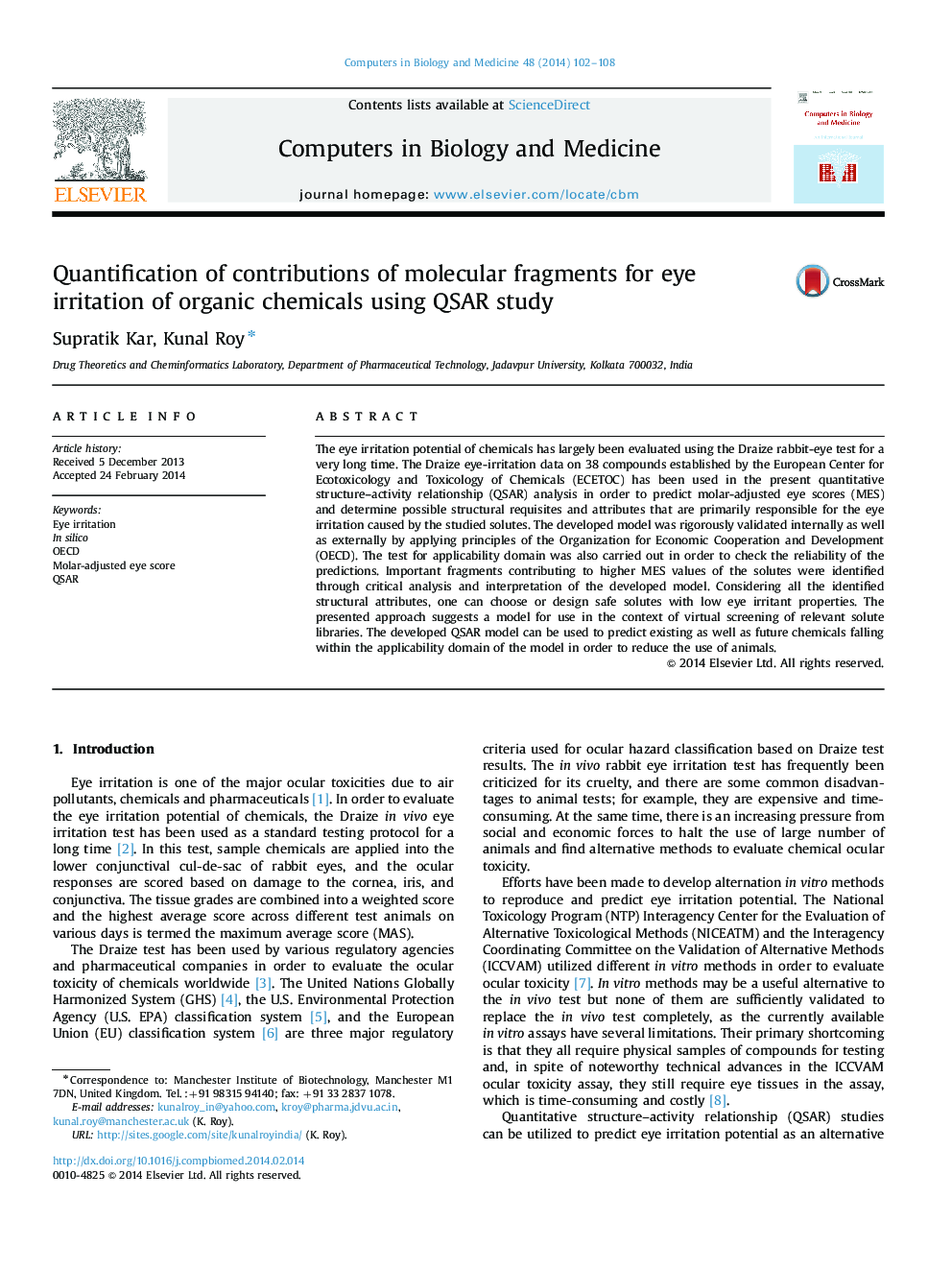| Article ID | Journal | Published Year | Pages | File Type |
|---|---|---|---|---|
| 504980 | Computers in Biology and Medicine | 2014 | 7 Pages |
The eye irritation potential of chemicals has largely been evaluated using the Draize rabbit-eye test for a very long time. The Draize eye-irritation data on 38 compounds established by the European Center for Ecotoxicology and Toxicology of Chemicals (ECETOC) has been used in the present quantitative structure–activity relationship (QSAR) analysis in order to predict molar-adjusted eye scores (MES) and determine possible structural requisites and attributes that are primarily responsible for the eye irritation caused by the studied solutes. The developed model was rigorously validated internally as well as externally by applying principles of the Organization for Economic Cooperation and Development (OECD). The test for applicability domain was also carried out in order to check the reliability of the predictions. Important fragments contributing to higher MES values of the solutes were identified through critical analysis and interpretation of the developed model. Considering all the identified structural attributes, one can choose or design safe solutes with low eye irritant properties. The presented approach suggests a model for use in the context of virtual screening of relevant solute libraries. The developed QSAR model can be used to predict existing as well as future chemicals falling within the applicability domain of the model in order to reduce the use of animals.
